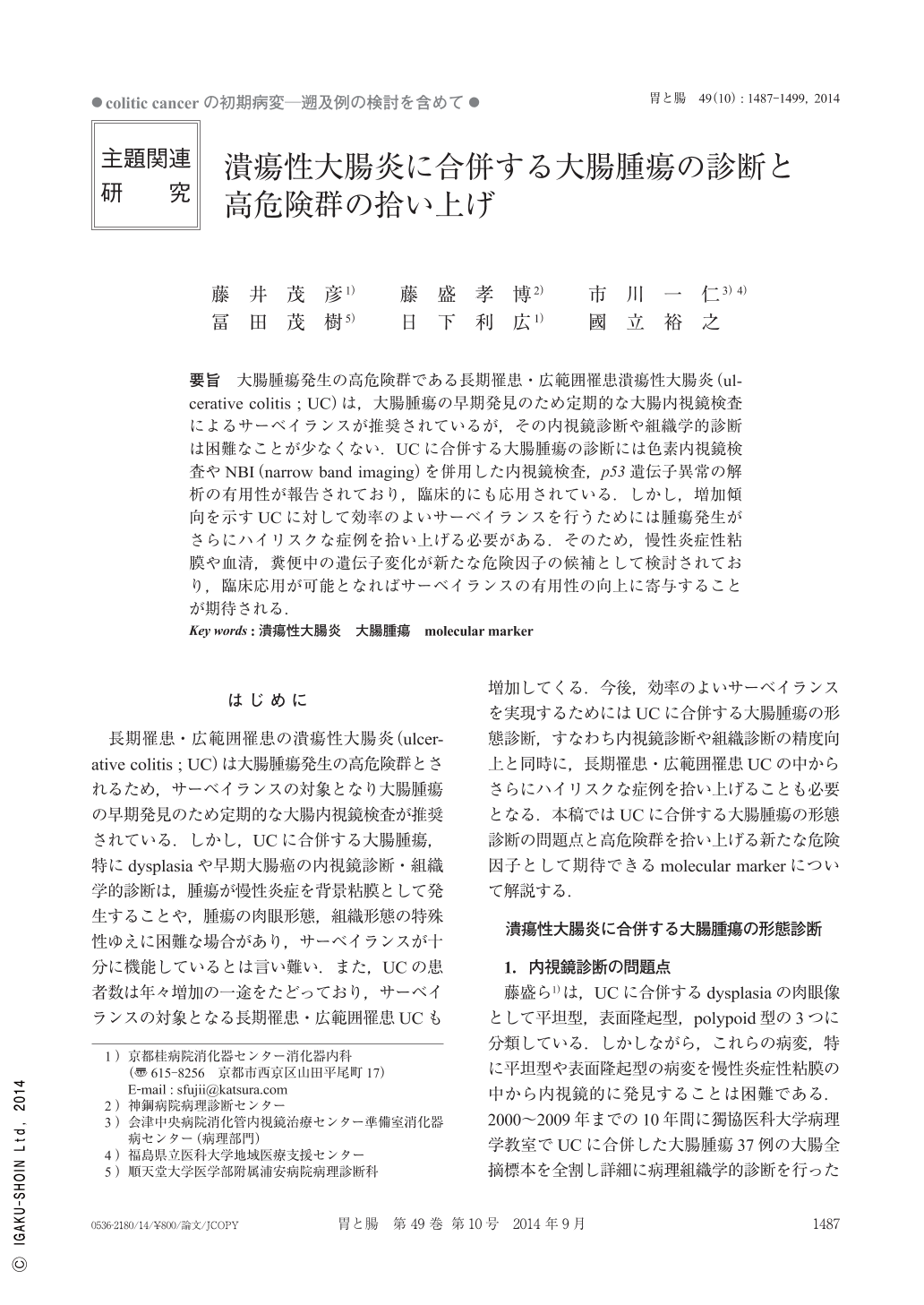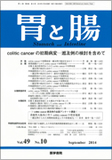Japanese
English
- 有料閲覧
- Abstract 文献概要
- 1ページ目 Look Inside
- 参考文献 Reference
要旨 大腸腫瘍発生の高危険群である長期罹患・広範囲罹患潰瘍性大腸炎(ulcerative colitis ; UC)は,大腸腫瘍の早期発見のため定期的な大腸内視鏡検査によるサーベイランスが推奨されているが,その内視鏡診断や組織学的診断は困難なことが少なくない.UCに合併する大腸腫瘍の診断には色素内視鏡検査やNBI(narrow band imaging)を併用した内視鏡検査,p53遺伝子異常の解析の有用性が報告されており,臨床的にも応用されている.しかし,増加傾向を示すUCに対して効率のよいサーベイランスを行うためには腫瘍発生がさらにハイリスクな症例を拾い上げる必要がある.そのため,慢性炎症性粘膜や血清,糞便中の遺伝子変化が新たな危険因子の候補として検討されており,臨床応用が可能となればサーベイランスの有用性の向上に寄与することが期待される.
The incidence of colorectal neoplasia has been increasing among patients with long-standing and extensive UC(ulcerative colitis), and surveillance colonoscopy has been widely recommended. However, UC-associated neoplasia is often difficult to detect endoscopically, and to discriminate from inflammatory regenerative epithelium histologically. Therefore, the efficacy of current surveillance colonoscopy remains uncertain. To address this, chromo- and magnifying endoscopy for endoscopic diagnosis, and the analysis of p53 alteration for histological diagnosis have been introduced as adjunctive modalities for diagnosing UC-associated neoplasia. Furthermore, if it were possible to differentiate UC patients with long-standing and extensive colitis into subgroups with a high and a low risk of neoplasia, physicians could conduct more intensive surveillance of high-risk patients using these modalities. Several molecular alterations of non-neoplastic epithelium in UC patients with neoplasia may be promising as markers for identifying individuals with UC who are at an increased risk of neoplasia.

Copyright © 2014, Igaku-Shoin Ltd. All rights reserved.


